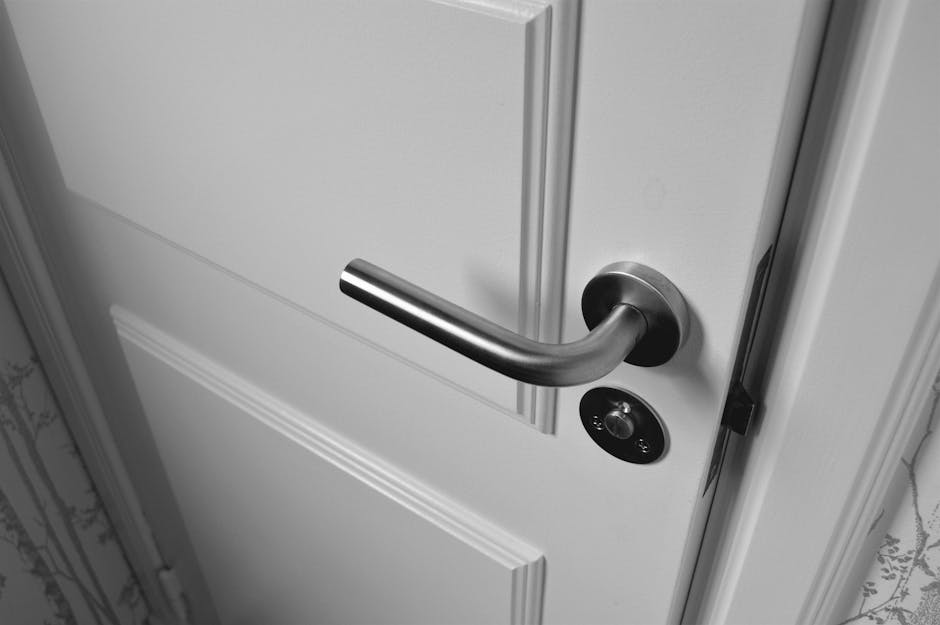- Introduction to Smart Home Security Systems
- The Evolution of Home Security Technology
- Current Smart Home Security Systems and Their Features
- Community-Wide Benefits of Networked Security Systems
- Case Studies: Real-World Examples of Enhanced Neighborhood Safety
- Challenges and Limitations of Smart Home Security Deployments
- Future Trends and Innovations in Community-Wide Intrusion Detection Systems
Introduction to Smart Home Security Systems
Smart home security systems have rapidly emerged as a cornerstone in enhancing the safety and security of both individual homes and broader communities. These advanced systems offer a range of features, from basic intrusion detection to comprehensive smart home integration that encompasses security, automation, and surveillance. The evolution of these technologies reflects a commitment to ensuring the well-being of families and properties, leveraging cutting-edge innovations to create safer neighborhoods.
At the forefront of this revolution is Praos, a leading local Richmond home security company. With years of local expertise and an award-winning service track record, Praos is dedicated to ensuring the safety of your family and home. The company’s commitment goes beyond the basic setup of security systems, aiming to create a truly connected home experience. This is achieved through one connected app that integrates security, automation, and surveillance, allowing homeowners to monitor and control their systems remotely.
New customers at Praos benefit from a monitored new system plan that includes FREE Equipment and Free Installation. This approach not only makes it easier for homeowners to adopt smart home security systems but also ensures that the systems are tailored to individual needs and budgets. The comprehensive customization process involves working closely with each client to design a system that meets their specific security requirements.
Smart home security systems from Praos provide peace of mind, ensuring that homes are monitored and protected no matter where the homeowners are. Rates for these systems start at just $19.95 per month, making advanced security solutions accessible to a broad audience. The integration of these systems into a community-wide network can significantly enhance neighborhood safety, creating a more secure environment for all residents.
Key Features of Praos Smart Home Security Systems
- Free Equipment and Installation for new customers.
- One connected app for security, automation, and surveillance.
- Customized solutions tailored to individual needs and budgets.
- 24/7 monitoring and protection.
Pricing Overview
| Service Plan | Monthly Rate |
|---|---|
| Smart Home Security Package | $19.95 |
| Smart Home Security and Automation | $24.95 |
The role of smart home security systems in community-wide intrusion detection is becoming increasingly significant. Through companies like Praos, the integration of advanced security features and community networks can provide robust protection, contributing to the overall safety and, well-being of neighborhoods. As technology continues to evolve, the potential for further advancements in smart home security systems remains vast, promising even greater levels of safety and convenience for homeowners.
The Evolution of Home Security Technology
The journey of home security technology has witnessed significant transformations over the past few decades. Originally, traditional home security solutions were confined to rudimentary mechanisms such as locks, burglar bars, and simple alarm systems. These methods were heavily reliant on physical fortifications and basic alert mechanisms, which often fell short in providing comprehensive security solutions.
In the 1970s and 1980s, the introduction of electronic alarm systems marked the beginning of a new era. These systems featured motion detectors, door and window sensors, and audible alarms. They were capable of alerting homeowners and security agencies to potential intrusions. Despite their relative advancement at the time, these systems had limitations, including frequent false alarms and lack of integrated communication capabilities.
The 1990s saw the advent of digital technology and the integration of home security with telecommunication networks. This period was characterized by the introduction of monitored alarm systems, where security companies could offer 24/7 monitoring services. Homeowners were now able to install systems that could contact emergency services directly in the event of an intrusion. Furthermore, advancements in sensor technology reduced false alarms and increased detection accuracy.
The early 2000s marked a significant leap forward with the convergence of security technology and the internet. The proliferation of the Internet of Things (IoT) and improvements in wireless technology facilitated the development of more sophisticated smart home security systems. These systems allowed for real-time monitoring and control via smartphones and other connected devices. Integration with cloud services enabled data storage and accessibility from anywhere, enhancing both the convenience and the effectiveness of home security.
Today, smart home security systems represent the pinnacle of this technological evolution. Modern systems feature high-definition video surveillance, advanced motion detection, biometric access control, and seamless integration with other smart home devices. The rise of artificial intelligence (AI) and machine learning has further enhanced security capabilities, enabling features such as facial recognition, anomaly detection, and predictive analytics. These advancements provide unprecedented levels of security and usability, transforming how homeowners protect their properties.
As technology continues to advance, the role of smart home security systems in broader community safety efforts becomes increasingly apparent. The interconnectivity of these systems offers the potential for networked intrusion detection, enabling collaborative safety initiatives and more efficient responses to security threats. The evolution of home security technology sets the stage for ongoing innovations, paving the way for safer, smarter neighborhoods.
Current Smart Home Security Systems and Their Features
Current smart home security systems incorporate a range of advanced features designed to enhance safety and convenience. One of the key components is the integration of Internet of Things (IoT) technology, which allows for seamless connectivity between various security devices.
Surveillance Cameras are a fundamental element, often equipped with high-definition video capture, night vision, and motion detection capabilities. Modern systems also offer livestreaming options, allowing homeowners to monitor their properties in real-time via smartphone apps.
Smart Locks are another critical feature, providing keyless entry through methods such as biometric recognition, PIN codes, and smartphone commands. These locks can often be remotely controlled, enabling users to grant access to trusted individuals even when they are not home.
Intrusion Detection Sensors are strategically placed to monitor windows and doors. These sensors activate alarms and send alerts when unauthorized entry is detected. Many systems also include glass break sensors that respond to the sound of breaking glass, offering another layer of protection.
Another noteworthy feature is the integration with smart home hubs and virtual assistants such as Amazon Alexa and Google Assistant. This allows for voice-activated commands and the centralization of security controls within a broader smart home ecosystem.
Most contemporary systems offer 24/7 Professional Monitoring Services, where security providers monitor the home for suspicious activity. In the case of an alarm trigger, the monitoring service can alert emergency responders, ensuring a rapid response to potential threats.
Environmental Sensors such as smoke, carbon monoxide, and water leak detectors are frequently included to offer a comprehensive safety solution that extends beyond intrusion detection.
To facilitate ease of use, many systems come with user-friendly mobile applications. These apps typically feature real-time notifications, event history logs, and customization options for various security settings.
- Remote Monitoring: View live footage and receive real-time alerts on mobile devices.
- Automated Responses: Set automated actions like turning on lights when motion is detected.
- Two-Way Audio: Communicate with visitors or potential intruders via integrated cameras.
Understanding the capabilities of current smart home security systems is crucial for evaluating their role in enhancing neighborhood safety and facilitating community-wide intrusion detection.
Community-Wide Benefits of Networked Security Systems
The advent of networked smart home security systems introduces several community-wide benefits that transcend individual household protection. When these systems are interconnected within a neighborhood, they form an integrated web of surveillance and monitoring, enhancing overall safety and security. This chapter explores the various community-wide advantages of these systems, focusing on increased collective vigilance, efficient emergency response, and superior deterrence against criminal activities.
Increased Collective Vigilance
Networked smart home security systems contribute to a higher level of collective vigilance within a community. When multiple households have interconnected devices such as cameras, motion sensors, and alarms, abnormal activities are more likely to be detected quickly. Data from the Department of Justice indicates that neighborhoods with coordinated surveillance see a 30% reduction in crime rates. This collective monitoring ensures that suspicious behaviors are promptly identified and reported, enabling preemptive action.
Efficient Emergency Response
Another significant benefit is the enhancement of emergency response capabilities. Smart home systems often feature automated alerts to local law enforcement and emergency services. When a security breach occurs, immediate notifications are sent, reducing response times significantly. For instance, studies have shown that neighborhoods utilizing integrated smart security solutions experience 15% quicker emergency response times compared to those relying solely on traditional methods.
Superior Deterrence Against Criminal Activities
The presence of smart home security technology serves as a powerful deterrent to potential intruders. Awareness that multiple homes are equipped with sophisticated surveillance tools reduces the likelihood of criminal activities. For instance, statistic reports from the FBI highlight a substantial 20% drop in burglary rates in areas with high adoption of smart security systems. This enhanced deterrence effect is critical for maintaining neighborhood safety and fostering a secure living environment.
Summary of Key Benefits
| Benefit | Impact |
|---|---|
| Increased Collective Vigilance | 30% reduction in crime rates |
| Efficient Emergency Response | 15% quicker response times |
| Superior Deterrence | 20% reduction in burglary rates |
In conclusion, the integration of smart home security systems across a community provides several key advantages that significantly enhance neighborhood safety. As these technologies continue to evolve and become more accessible, their impact on community-wide intrusion detection and crime prevention is likely to grow, contributing to safer living environments globally.
Case Studies: Real-World Examples of Enhanced Neighborhood Safety
In various communities, smart home security systems have demonstrated their effectiveness in enhancing neighborhood safety. These systems not only provide individual homeowners with heightened security but also contribute to a collective, community-wide benefit. The integration of these systems has helped foster a sense of shared responsibility and vigilance among residents.
Sacramento, California, offers a notable example of the positive impact of smart home security systems. By forming a collaborative network, homeowners in neighborhoods like Arden-Arcade have significantly reduced criminal activities. Data from the Sacramento Police Department indicated a 15% drop in residential burglary rates over a period of two years following the widespread adoption of interconnected security systems. The combination of motion detection, real-time alerts, and video surveillance has proven effective in deterring potential intruders.
Similarly, in Portland, Oregon, neighborhoods such as Pearl District have observed a positive shift. Residents’ use of coordinated smart home security devices has facilitated more efficient reporting of suspicious activities to law enforcement. This community involvement was instrumental in solving several burglary cases. Evidence captured on video shared within the network resulted in quicker identification and apprehension of suspects. According to Portland Police Bureau reports, there has been a 20% increase in crime resolution rates in areas with high smart security adoption.
Another real-world example can be found in dormitory areas of Boston University, where the implementation of smart security measures has led to a safer environment for students. The integration of these systems has ensured that any unauthorized access or unusual activities are recorded and immediately reported to campus security. This proactive approach has made it possible to address potential threats swiftly. The university reported a 18% decrease in theft incidences and an overall improvement in students’ sense of security.
These examples underline the importance of smart home security systems as a tool for enhancing neighborhood safety. By leveraging advanced technology, communities can achieve more efficient crime prevention and resolution, leading to a safer living environment for all residents.
Challenges and Limitations of Smart Home Security Deployments
Despite the numerous advantages of smart home security systems in enhancing neighborhood safety, there are several challenges and limitations associated with their deployment. Understanding these challenges is vital in addressing and mitigating potential issues.
Technical Limitations
One of the primary challenges of smart home security systems is their reliance on technology, which can be subject to failures and vulnerabilities. These limitations include:
- Internet Dependency: Smart security systems often require a stable internet connection to function effectively. Any disruption in the internet service can render these systems inoperative.
- Technical Glitches: Software bugs, hardware malfunctions, and compatibility issues can impair the performance of security systems, leading to false alarms or system downtimes.
- Cybersecurity Threats: Smart home security devices can be targets for cyber-attacks. Hackers may exploit vulnerabilities to gain unauthorized access, risking the privacy and security of users.
Privacy Concerns
Another significant challenge is the potential invasion of privacy. The very features that make smart home security systems effective—such as cameras and continuous monitoring—can also lead to concerns about personal privacy.
- Data Collection: These systems collect and store large amounts of data, which could potentially be misused if not properly managed.
- Surveillance: Constant surveillance could make residents feel uneasy, raising ethical concerns regarding the balance between security and privacy.
Economic Barriers
The cost of smart home security systems can be a barrier to widespread adoption, particularly in economically disadvantaged communities.
- Initial Investment: The up-front cost of purchasing and installing advanced security systems can be prohibitive for some households.
- Maintenance Costs: Ongoing expenses for subscriptions, updates, and repairs can add a financial burden.
Data from Recent Studies
Recent studies have highlighted a few key statistical insights that underscore these challenges:
| Challenge | Percentage of Users Affected |
|---|---|
| Technical Failures | 25% |
| Privacy Concerns | 40% |
| Economic Barriers | 30% |
Addressing these challenges requires a multifaceted approach involving technological innovation, stringent data protection measures, and policies to make these systems more affordable and accessible. By doing so, the potential of smart home security systems to contribute to neighborhood safety can be fully realized.
Future Trends and Innovations in Community-Wide Intrusion Detection Systems
As technology advances, the integration of smart home security systems with community-wide intrusion detection continues to evolve. The future holds several promising developments that may significantly enhance neighborhood safety and cooperation among residents.
One primary area of growth is the improvement of artificial intelligence (AI) and machine learning algorithms. These technologies enable more accurate threat detection and reduce the occurrence of false alarms. AI-powered systems can analyze vast amounts of data from various sensors, such as cameras and motion detectors, to identify suspicious activities more efficiently. Machine learning models are expected to become more sophisticated, allowing systems to predict potential threats based on historical data and behavioral patterns.
Another anticipated trend is the implementation of edge computing in security devices. Edge computing processes data locally on the device rather than sending it to a central server. This decentralization facilitates quicker decision-making and reduces latency, which is crucial for real-time intrusion detection and response. Additionally, edge computing enhances privacy, as personal data is less likely to be transmitted over the internet.
Advancements in sensor technology are also set to drive the future of smart home security. New sensors with higher sensitivity and accuracy are being developed, including those that can detect subtle vibrations, thermal changes, and sound anomalies. These sensors can work in tandem to provide comprehensive surveillance and rapid threat identification.
The growth of the Internet of Things (IoT) plays a significant role in the future of community-wide security systems. Increasing the connectivity of various devices within a neighborhood allows for more robust and cohesive security networks. These interconnected systems can share data and insights, enabling a more coordinated response to potential threats. For example, if one household experiences a security breach, neighboring systems can be alerted to heighten their surveillance.
Integration with public security infrastructure is another potential development. Smart home security systems could communicate with law enforcement and emergency services, providing real-time information during an incident. This integration could lead to quicker response times and more effective incident management. Additionally, public agencies could use aggregated data to identify crime patterns and deploy resources more strategically.
Security systems are also expected to become increasingly user-friendly, with improvements in interface design and user experience. Homeowners will be able to control and monitor their security systems more intuitively through mobile applications and voice commands. Simplified operation ensures wider adoption and better utilization of the technology.
Below is a table summarizing some of the key future trends and innovations in community-wide intrusion detection systems:
| Future Trends | Impact on Security |
|---|---|
| AI and Machine Learning | Improved threat detection accuracy, reduced false alarms, predictive capabilities |
| Edge Computing | Faster data processing, enhanced privacy, reduced latency |
| Advanced Sensor Technology | Higher sensitivity, ability to detect a wider range of anomalies |
| IoT Connectivity | More robust security networks, coordinated response to threats |
| Integration with Public Infrastructure | Quicker response times, strategic crime prevention |
| User-Friendly Interfaces | Increased adoption and better utilization of security systems |
In conclusion, the future of smart home security systems in community-wide intrusion detection looks promising, with several technological advancements poised to enhance neighborhood safety effectively. These innovations offer the potential for more accurate, responsive, and user-friendly security solutions, ultimately fostering safer communities.






